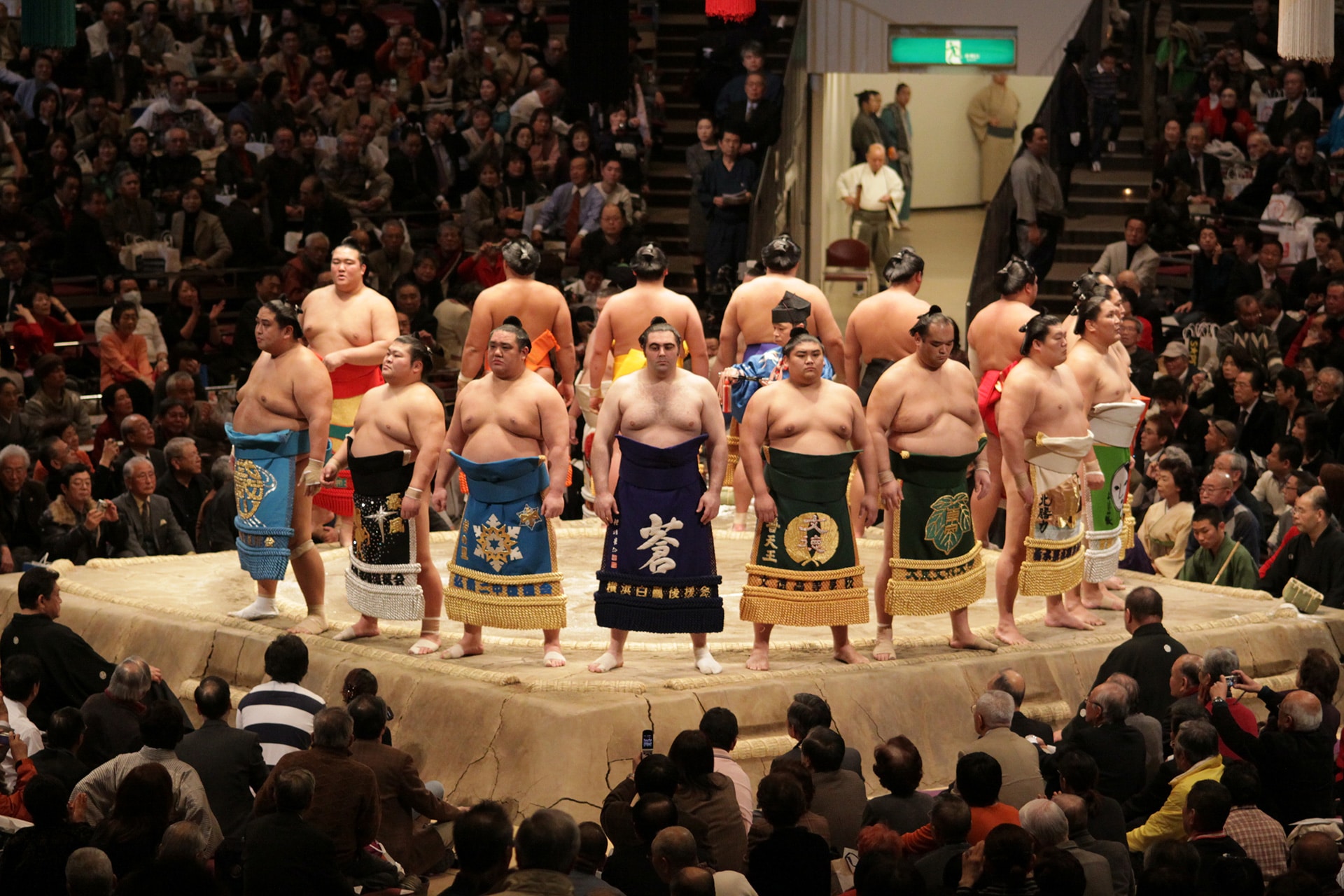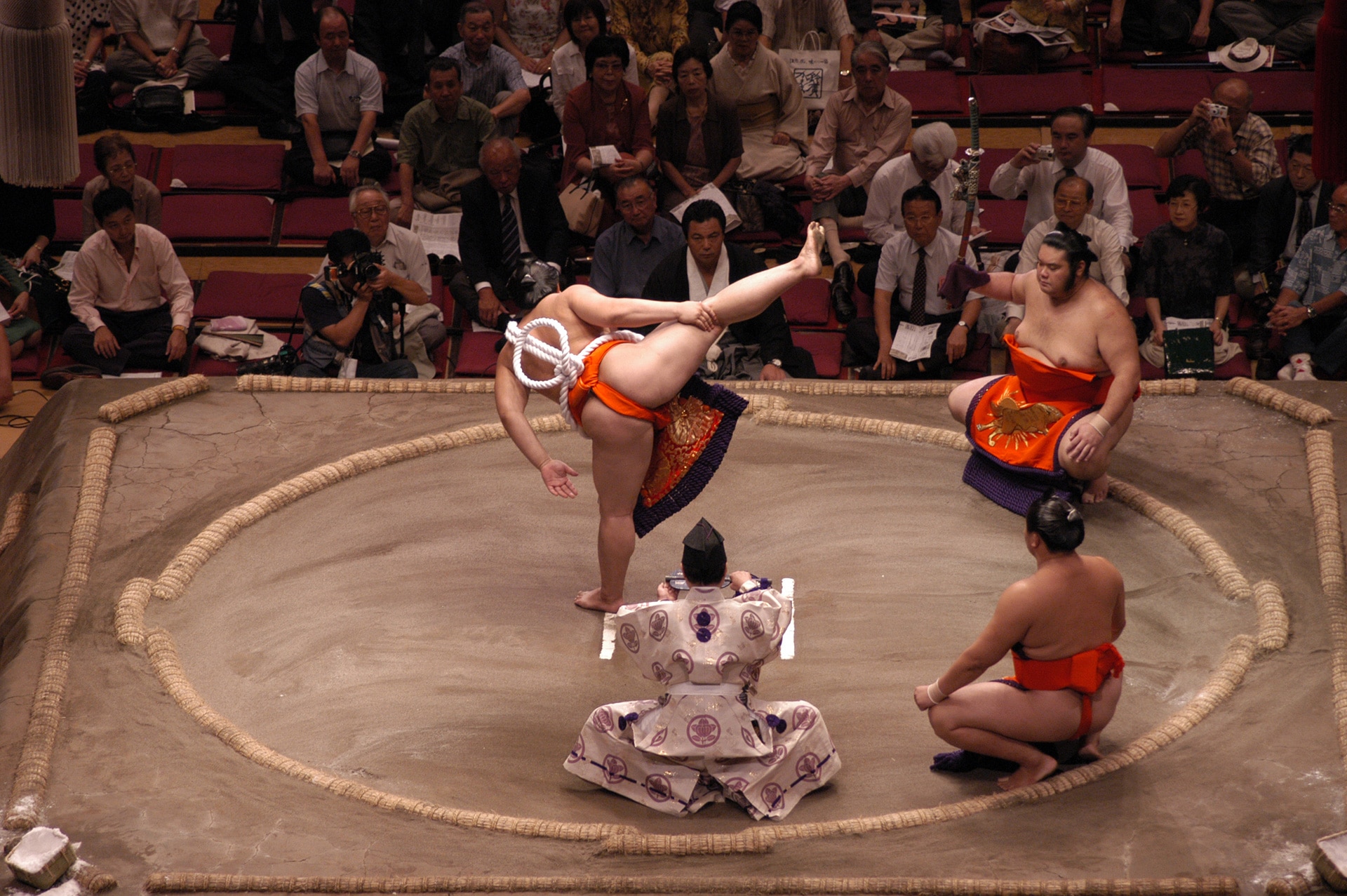
As ancient as it is quintessentially Japanese, the national sport of sumo wrestling dates back more than 2,000 years. While it’s evolved throughout the centuries, today’s sumo is largely unchanged since the Edo period (1603-1868). Steeped in ancient traditions and rigid in its ceremony, sumo offers a fascinating insight into traditional Japanese culture.
Sumo matches take place on an elevated ring (dohyo) which is made of clay and covered with a layer of sand. The rules are simple: the first wrestler (rikishi) to exit the ring or touch the ground with any part of his body (aside from the soles of his feet) loses. There are no weight restrictions or classes in sumo, which means that wrestlers may find themselves pitted against someone many times their size. As a result, weight gain is an essential part of sumo training.
Sumo bouts often last only seconds, with much of the wrestlers’ time in the dohyo spent performing a series of rituals. The two rikishi spend a few minutes scaring evil spirits away by stomping and slapping their bellies, then throwing salt into the dohyo to purify the arena and protect themselves from injuries.
Sumo tournaments (honbasho) are held just six times a year throughout Japan, making securing tickets a challenge, particularly for non-locals. Plan Japan’s vast Japanese network allows us to secure excellent ringside seats for our corporate clients – even when tournaments are officially sold-out. Our local contacts are so well connected that our clients were seated in the same row as the Emperor and Empress of Japan at a recent sumo tournament in Tokyo.

Today’s wrestlers still follow the highly regimented lifestyle of rikishi from centuries ago. When they’re not competing, they live and train in sumo stables, known as heya, and follow a punishing daily routine. They wake at dawn and skip breakfast before beginning a 3-4 hour training session. Following this, they sit down to a hotpot lunch of meat, seafood, vegetables and rice called chanko nabe (sumo stew).
A typical sumo wrestler eats around 20,000 calories each day – about 10 times the daily intake recommended for a healthy male! Unsurprisingly, the modern sumo’s life expectancy is more than 10 years shorter than that of the average Japanese male.
When joining a heya, sumos are expected to grow their hair to form a topknot. They must style their hair in this way and wear traditional dress whenever they leave their stable. They’re also forbidden from driving.
Most heya are based in Tokyo’s Ryogoku neighbourhood. Plenty of tour operators offer stable tours and the opportunity to watch a sumo practice session, but these are generally overcrowded and inauthentic – some stables even hold an expensive ‘fake’ practice session purely to please unwitting foreign tourists.

At Plan Japan, we specialise in delivering genuine sumo experiences that are worlds away from the standard tourist trail. If your visit doesn’t coincide with a sumo tournament, we can organise an exclusive visit and demonstration from a professional ex-sumo wrestler for your corporate group. Learn about the sumo lifestyle and hear career highlights over an authentic chanko nabe hotpot lunch. We’ve even arranged for sumos to make a guest appearance at private sake and whiskey tastings, and spend happy hour at the hotel bar with our clients, taking those incentive and team building trips to the next level.
Plan Japan is a boutique travel consultancy that specialises in creating customised, highly authentic corporate travel itineraries. With staff in Melbourne and Tokyo, our unmatched network of contacts in travel, tourism and hospitality allows us to offer clients a truly bespoke approach to conferences, incentive and team building trips. From five-star dining to VIP draft car and golf experiences, we pride ourselves on delivering Japanese corporate travel itineraries with a difference that guests will talk about for years to come.
Contact us for more information about making an authentic sumo experience part of your next corporate trip.

